|
whiteyfats posted:When I lived in Gainesville, FL, I knew a lady from Scotland, and she couldn't get over 1) how loving big the bugs in Florida get, and 2) the fact lizards are everywhere. Summer 2015 I spent doing fieldwork in a peatbog in Alberta, and one of the field assistants had recently moved to Canada from Trinidad. She was very surprised that there were no lizards around. Also yeah, Florida insects get enormous.
|
|
|
|

|
| # ¿ May 10, 2024 02:52 |
|
North American crows are all black, but the rest of the world has multi-coloured / multi-toned corvids galore. This thread sees a regular trickle of Yanquis / Canucks visiting Europe and posting pictures of "looks like a crow but it's not all black". Don't feel bad, I (  ) did a big double-take the first time I went to Europe. Also, the alarm call of Euro Blackbirds is extremely similar to the "oh poo poo a cat" call of American Robins - they're in the same genus and if you ignore the colour differences they're basically the same bird. ) did a big double-take the first time I went to Europe. Also, the alarm call of Euro Blackbirds is extremely similar to the "oh poo poo a cat" call of American Robins - they're in the same genus and if you ignore the colour differences they're basically the same bird.Biogeographic tourism is the best tourism.
|
|
|
|
Yesterday I went for a walk through the wetland behind the ecology research institute I've been at all this week.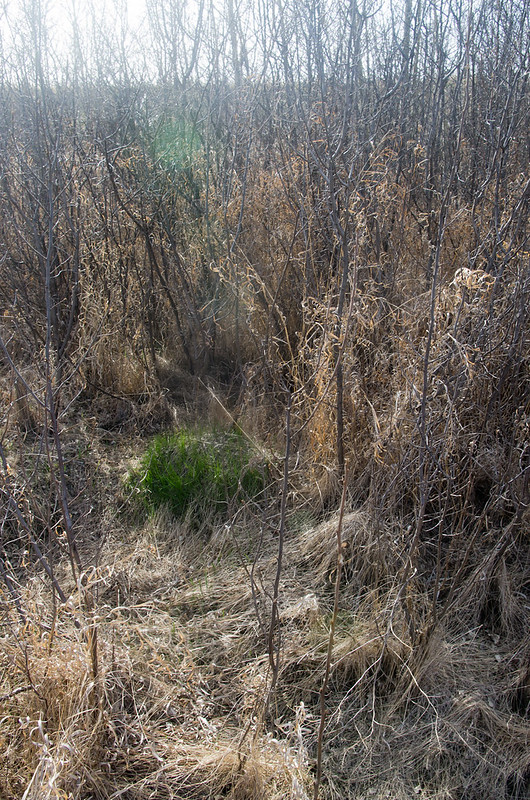 Wetland Behind NAIT BRI 2 by Martin Brummell, on Flickr Wetland Behind NAIT BRI 2 by Martin Brummell, on FlickrSome of the first green plants to show up are sprouting up through ant mounds. 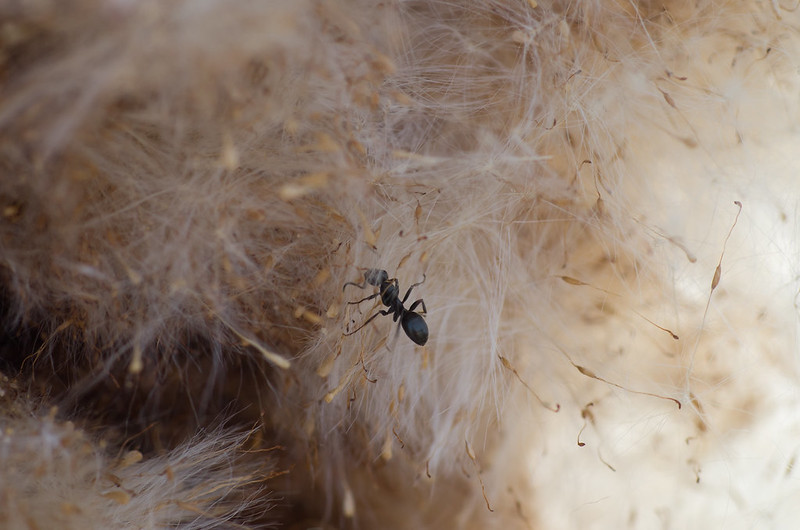 Wetland Behind NAIT BRI 3 by Martin Brummell, on Flickr Wetland Behind NAIT BRI 3 by Martin Brummell, on FlickrThe ants are planting seeds - in this case, from a cattail. 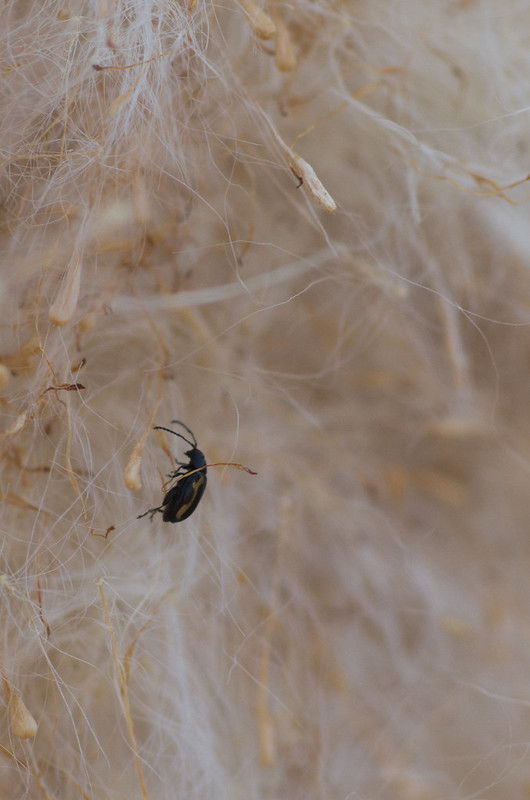 Wetland Behind NAIT BRI 5 by Martin Brummell, on Flickr Wetland Behind NAIT BRI 5 by Martin Brummell, on FlickrBeetle. 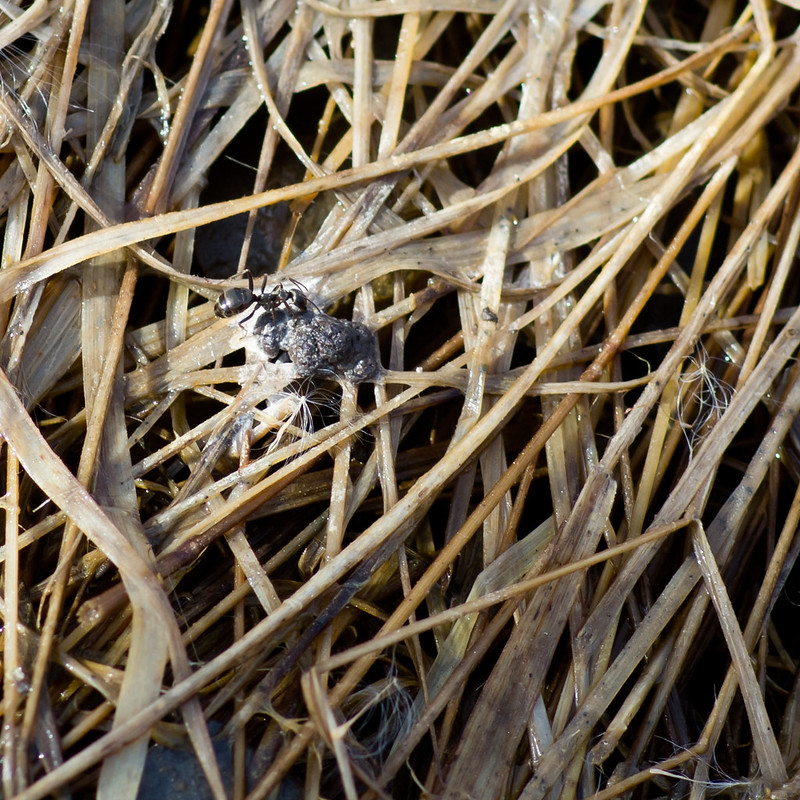 Wetland Behind NAIT BRI 6 by Martin Brummell, on Flickr Wetland Behind NAIT BRI 6 by Martin Brummell, on FlickrMmmm.... tasty bird poop! 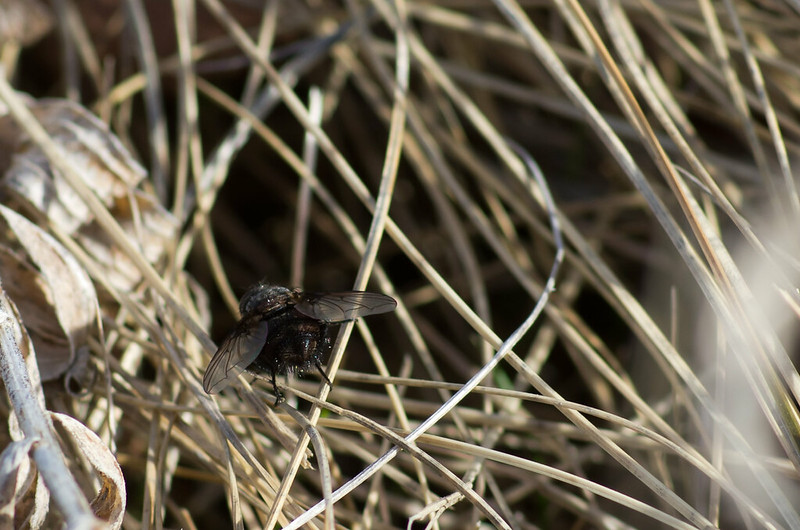 Wetland Behind NAIT BRI 10 by Martin Brummell, on Flickr Wetland Behind NAIT BRI 10 by Martin Brummell, on FlickrButt 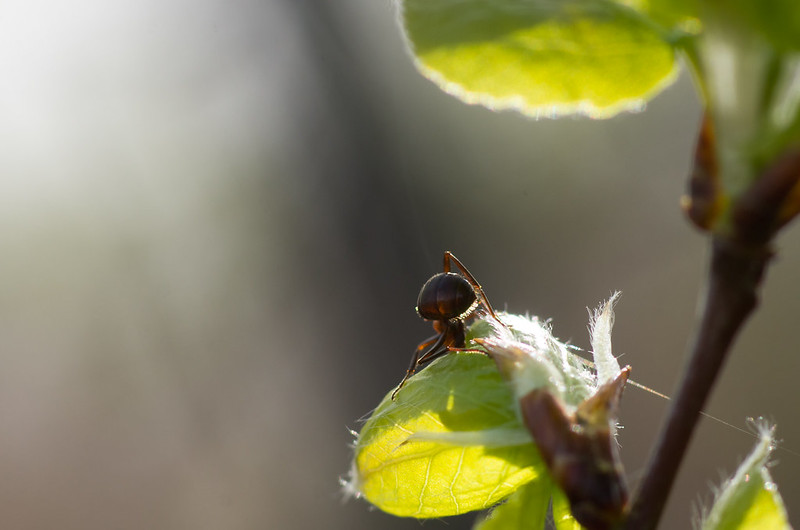 Wetland Behind NAIT BRI 13 by Martin Brummell, on Flickr Wetland Behind NAIT BRI 13 by Martin Brummell, on FlickrAnt butt  Wetland Behind NAIT BRI 18 by Martin Brummell, on Flickr Wetland Behind NAIT BRI 18 by Martin Brummell, on FlickrCrocus  Wetland Behind NAIT BRI 19 by Martin Brummell, on Flickr Wetland Behind NAIT BRI 19 by Martin Brummell, on FlickrThis spider tried to hide as a lump on the twig when she spotted me. Click through for two more pictures of her. 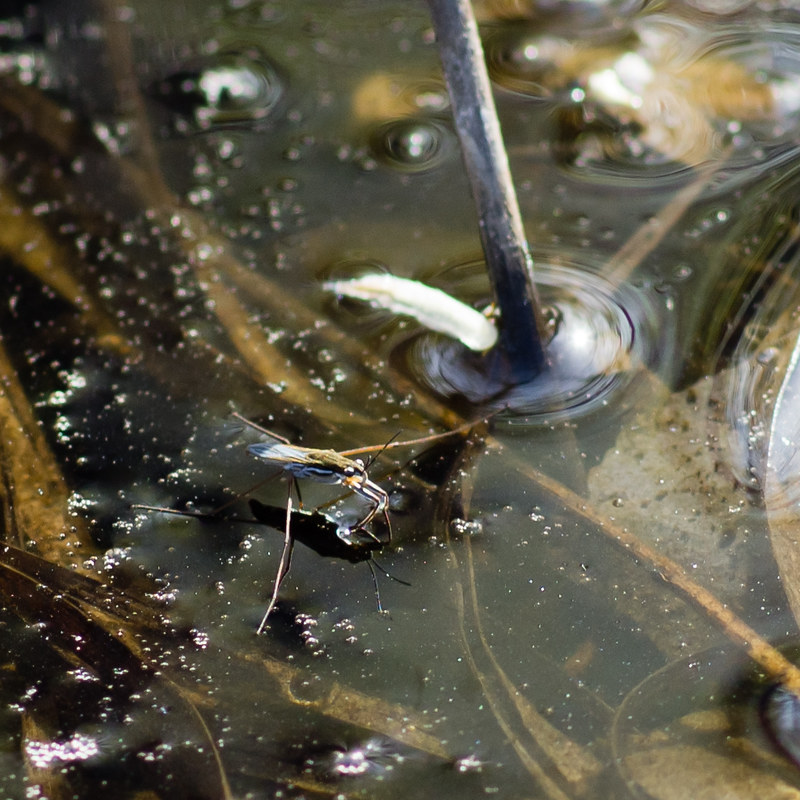 Wetland Behind NAIT BRI 24 by Martin Brummell, on Flickr Wetland Behind NAIT BRI 24 by Martin Brummell, on FlickrBug 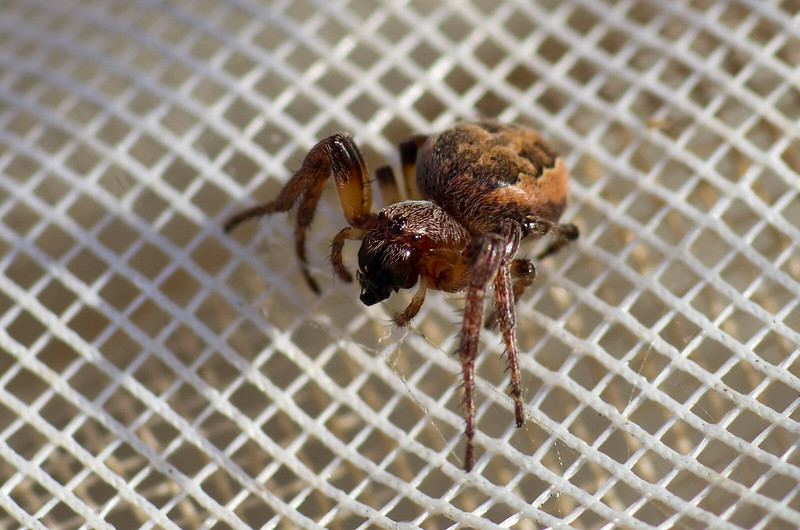 Wetland Behind NAIT BRI 25 by Martin Brummell, on Flickr Wetland Behind NAIT BRI 25 by Martin Brummell, on FlickrI had a net, but I wasn't using it. I put it down for a bit and this spider sat there chewing on her meal. From other, not-as-good pictures I think her prey is a beetle of the same species as pictured in a cattail seed-head, above.  Wetland Behind NAIT BRI 28 by Martin Brummell, on Flickr Wetland Behind NAIT BRI 28 by Martin Brummell, on FlickrLymnaeid snail, in bookmark format 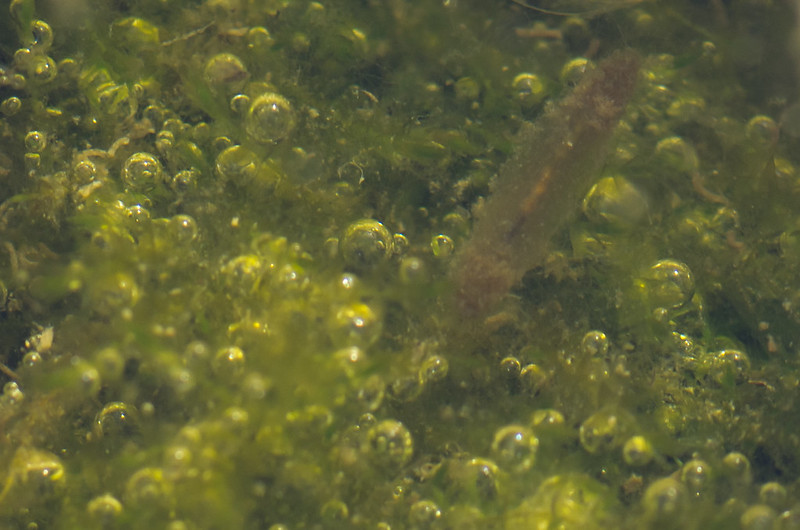 Wetland Behind NAIT BRI 29 by Martin Brummell, on Flickr Wetland Behind NAIT BRI 29 by Martin Brummell, on FlickrI dunno what this is. Some kind of larva, I think. 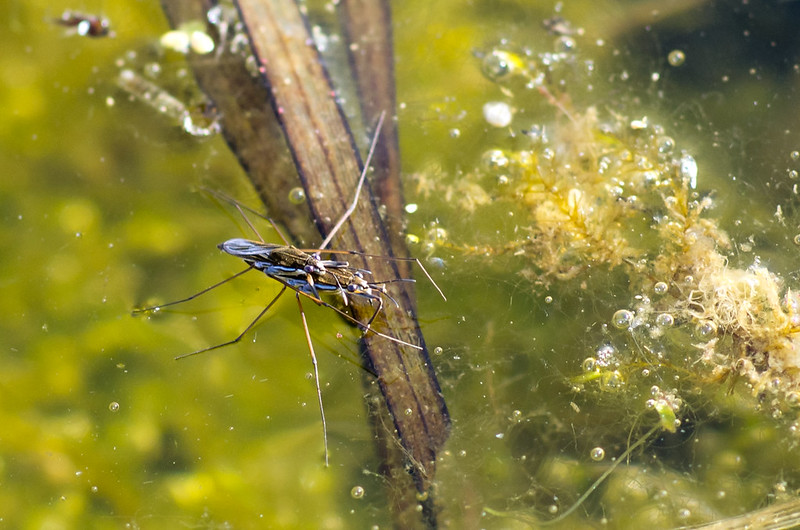 Wetland Behind NAIT BRI 30 by Martin Brummell, on Flickr Wetland Behind NAIT BRI 30 by Martin Brummell, on FlickrBugs, loving!  Wetland Behind NAIT BRI 33 by Martin Brummell, on Flickr Wetland Behind NAIT BRI 33 by Martin Brummell, on FlickrMore bugs, loving!
|
|
|
|
CaptainSarcastic posted:Aren't those water striders and water boatmen, respectively? the yeti posted:I was all set to suggest your unknown larva was a dragonfly nymph but I can't actually make out any legs so now I'm not sure if I'm going blind or maybe it's a flatworm or something?
|
|
|
|
/\/\/\ I can make out "ONE PINT" in your first photo - are you collecting amphibs in a beer glass? EDIT - I mean The Yeti's post. axolotl farmer posted:Some kind of Diptera, maybe a larva of a soldier fly. Oh yeah! Soldier flies! I don't know why I didn't think of them. Thanks, I'm really leaning towards "Dipteran" now.
|
|
|
|
I'm spending May doing fieldwork in Alberta - I work on restoring disturbed peatlands, though not with any critter-focus; this week I've been based in the town of Peace River, which is on the Peace river - hopefully that's not confusing. Today was an interesting day, despite being a day off work. I went for a Sunday Drive, which as usual means I drive to a park or some other nice place to for a walk and I see what I can see. First up, Sand Lake Provincial Park, where I found my first tiger beetle and my first dragonfly of the year. Plus, some hyperactive parasitoid wasps and a few other insects.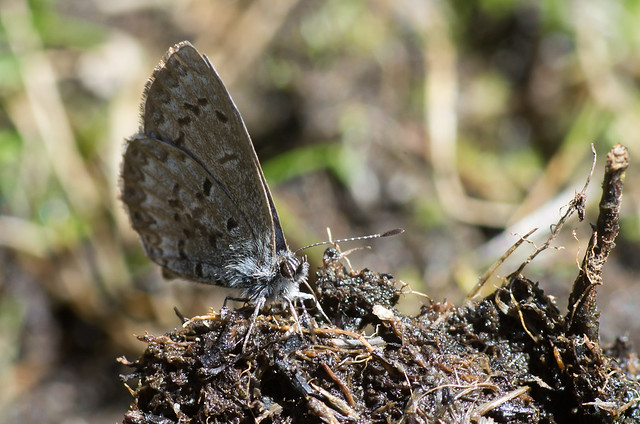 Sand Lake Park Insects 1 by Martin Brummell, on Flickr Sand Lake Park Insects 1 by Martin Brummell, on Flickr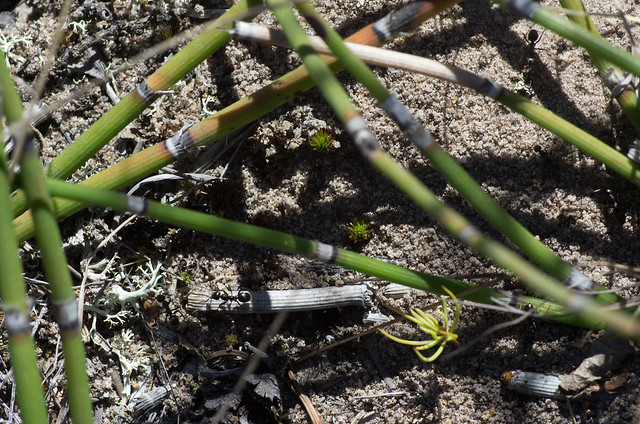 Sand Lake Park Insects 2 by Martin Brummell, on Flickr Sand Lake Park Insects 2 by Martin Brummell, on Flickr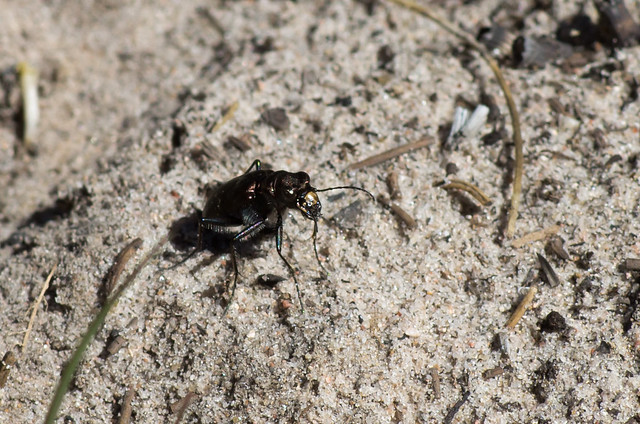 Sand Lake Park Insects 4 by Martin Brummell, on Flickr Sand Lake Park Insects 4 by Martin Brummell, on Flickr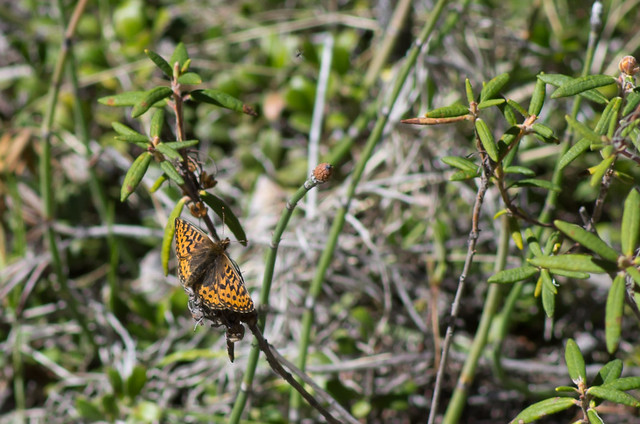 Sand Lake Park Insects 5 by Martin Brummell, on Flickr Sand Lake Park Insects 5 by Martin Brummell, on Flickr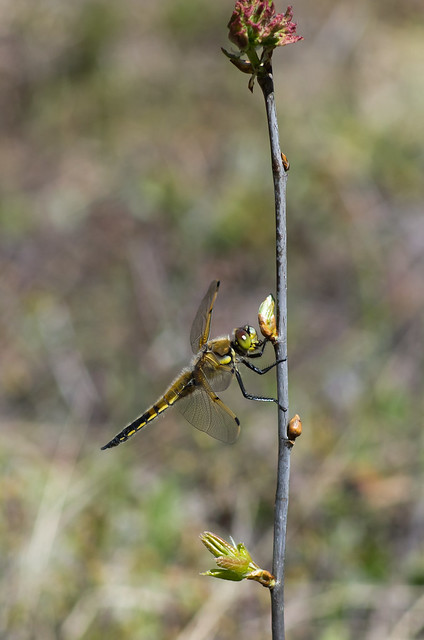 Sand Lake Park Insects 6 by Martin Brummell, on Flickr Sand Lake Park Insects 6 by Martin Brummell, on Flickr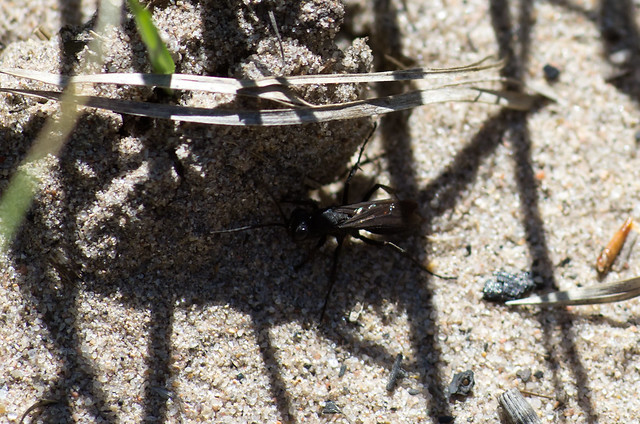 Sand Lake Park Insects 7 by Martin Brummell, on Flickr Sand Lake Park Insects 7 by Martin Brummell, on Flickr Sand Lake Park Insects 8 by Martin Brummell, on Flickr Sand Lake Park Insects 8 by Martin Brummell, on FlickrThis didn't take as much time as I thought it would - the trails were all ATV tracks, mostly with deep puddles between the higher sandy ridges, and it was difficult to get very far. I found another place on the other side of the river (the Peace river has relatively few crossings, this isn't a densely populated part of the world), got a bit lost on my way there and scraped the bottom of my rental car - a 2017 VW Beetle I've named "Molitor" because it's black - on the gravel / dirt roads, and ended up at a part of the Peace River Wildlands. I'm not sure of the status of these areas - PR Wildlands are a series of discontiguous blocks of mostly aspen forest along the right bank of the Peace river, and I think hunting is allowed in the areas, and certainly I've seen plenty of signs that the trails are made and used by motorized vehicles, but I think they're protected from, say, industrial development. Around here, that means oil extraction. I walked in on an ATV trail about 300m to a clearing, where I put on my bug jacket because the mosquitoes - which are huge in this part of the world - were surprisingly awful, and poked around a bit. The trails out of the clearing were much too small for an ATV and appeared to be simply game trails. I spooked a couple of deer, possibly elk*, they crashed off through the bush before I could get a good look at them. Just down a trail I encountered a dead deer. I don't know enough about decomposition to say how long this deer had been dead, but it was missing its head, having been decapitated - I was approaching it from the front. It also seemed to be missing its feet, and had not been gutted. Most of the fur had fallen off and the exposed flesh was mostly black. I'm sure it was not killed yesterday, but beyond that I have no idea. It smelled like you'd think it smelled, but I was suprised how weak the smell was. Certainly, I didn't like it, but the smell was far from overpowering. Anyway, I had a look and took some pictures without getting too close (I won't subject you to those pics, this thread isn't the place for that I think) and thought about bears. * North American elk, not moose. Sorry Sweden. On my way back to my car I decided the mosquitoes weren't THAT bad and there was an interesting side trail to explore. Down that about 100m I found probably-fresh bear poo poo, clear bear paw prints in some mud, which I noticed when I looked straight down at my own feet, my boot prints were interspersed with the bear prints, and something weird up ahead - some orange tape and other obviously-artificial stuff. There was also this useless, destroyed sign: 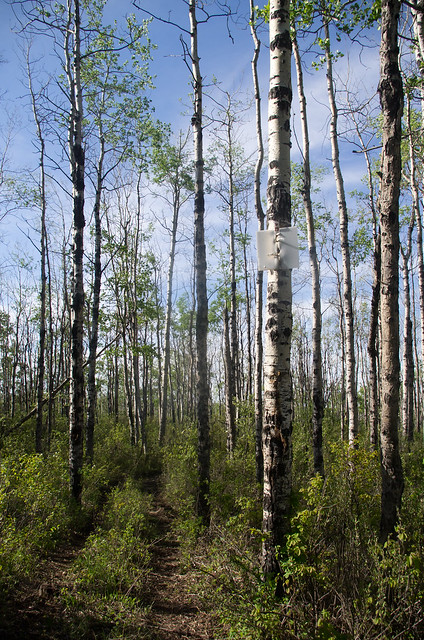 Bear Bait 3 by Martin Brummell, on Flickr Bear Bait 3 by Martin Brummell, on Flickr20 or 30 metres ahead, I found this: 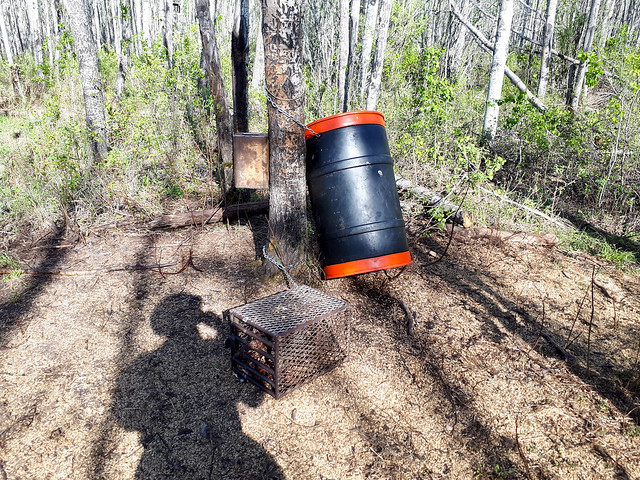 Bear Bait 1 by Martin Brummell, on Flickr Bear Bait 1 by Martin Brummell, on Flickrand this badly-faded sign on a tree: 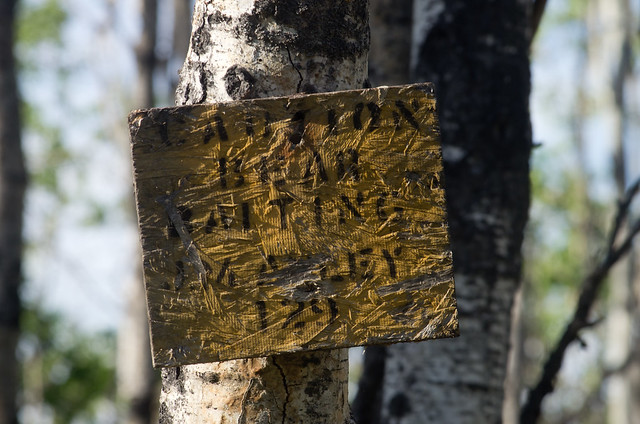 Bear Bait 4 by Martin Brummell, on Flickr Bear Bait 4 by Martin Brummell, on FlickrI could just make out "bear baiting" and after getting the photo onto my computer I can see it says "Caution" at the top and "129" at the bottom; the second-last row is a mystery to me. Then I turned around and saw the trail camera: 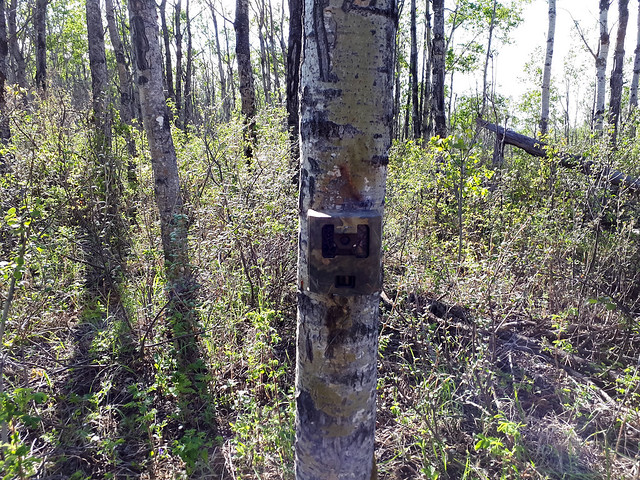 Bear Bait 2 by Martin Brummell, on Flickr Bear Bait 2 by Martin Brummell, on FlickrI was putting all of this together in my head and I figured it out - I was quite proud of myself! Bear baiting, for pictures! The metal cage/box thing had something inside, and what was sticking out between some of the bars looked like neck vertebrae from something deer-sized, so my guess is the box contained a deer head. I waved at the camera, took a few more pictures, and then realized that I was standing right in the middle of a setup designed and built to attract a bear, and there was fresh bear sign not only nearby, but between me and my car. Plus, the mosquitoes were getting worse and some of the flying things bouncing off my face were NOT mosquitoes, and there was rotting meat nearby. Once I got back to Peace River I told my colleague, who I've been staying with, about my adventures. I showed him that picture of the site with the barrel and the chains and he said he's seen too many horror movies. The more I thought about it, the weirder the whole thing seemed - decapitated deer about 200m from a bear-baiting camera trap, badly faded, old signs, and no effort apparently made to set up any sort of monitoring of the rest of the carcass. I phoned Report A Poacher, told my story and gave the driving directions and coordinates (park at the north end of Birch Hills Range Road 24, walk west - the trails are obvious), and was told I had done the right thing in making my report and a Fish & Wildlife officer will check it out. I gave my name and phone number, hopefully if something comes of this they'll at least let me know. And whoever downloads the pictures from the camera will get a chuckle at me stumbling around trying to put 2 + 2 together, then taking pictures of a camera with my phone while my DSLR dangles from my wrist, while wearing my bugjacket.
|
|
|
|
Last week, I discovered this mud-dauber trying to get into my office. This mud-dauber is building nests in my office window by Martin Brummell, on Flickr This mud-dauber is building nests in my office window by Martin Brummell, on FlickrShe was very active and did manage to get inside at one point (I was able to capture her in a coffee cup and take her outside) so I didn't take off the screen to get pictures. Yesterday she wasn't around so I popped out the screen and had a closer look. She's been building nests in the window frame. 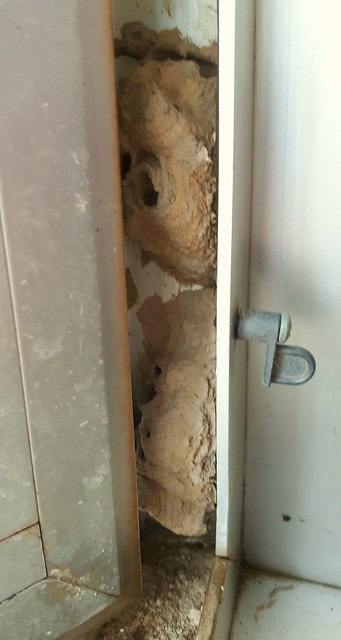 This mud-dauber is building nests in my office window by Martin Brummell, on Flickr This mud-dauber is building nests in my office window by Martin Brummell, on Flickr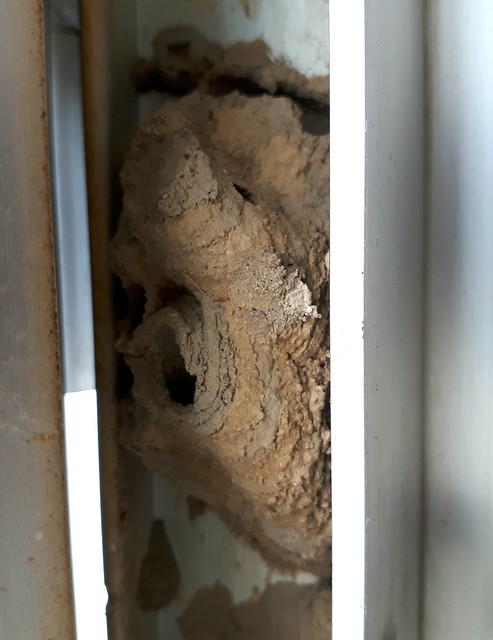 This mud-dauber is building nests in my office window by Martin Brummell, on Flickr This mud-dauber is building nests in my office window by Martin Brummell, on Flickr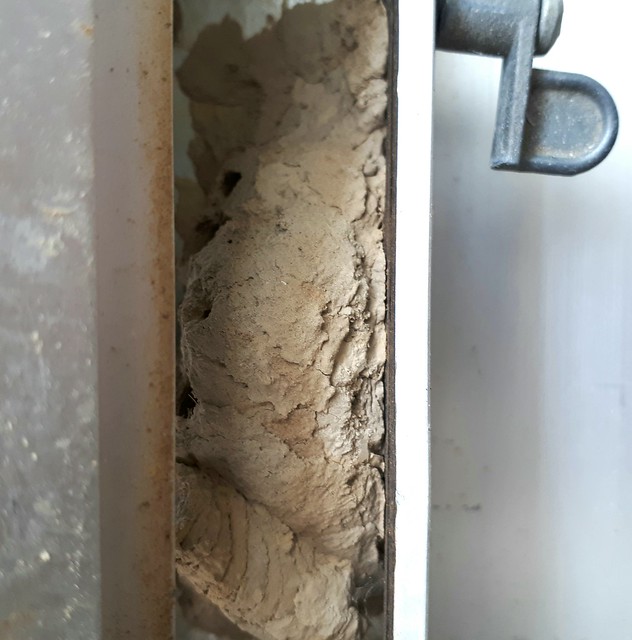 This mud-dauber is building nests in my office window by Martin Brummell, on Flickr This mud-dauber is building nests in my office window by Martin Brummell, on Flickr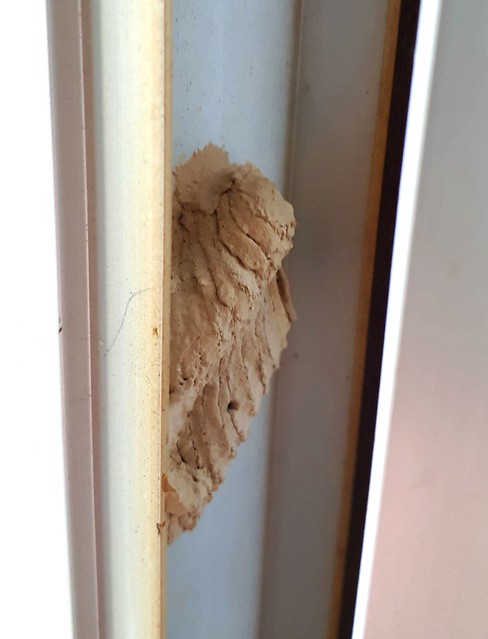 This mud-dauber is building nests in my office window by Martin Brummell, on Flickr This mud-dauber is building nests in my office window by Martin Brummell, on FlickrIf the window is closed, the nests will be crushed. This morning, the window was partly closed. I re-opened it as far as it goes and I don't *think* the nests are damaged. I'm the only person in this office normally, my office-mate is away almost all of the time. But the cleaning staff come in here to clear the garbage can and sweep a bit, I guess one of them must have partly-closed the window last night.
|
|
|
|
Some variety of parasitoid wasp. There are many, many, many that do that kind of thing. The basic idea is she (those are females) digs a hole then flies off to find her preferred prey. They tend to be particular in their tastes, hunting only a single family or even genus or species of prey; often it's spiders but some specialize in, say, Buprestid beetles. She stings her victim, paralyzing it, then brings it back to her hole. She lays one egg on the paralyzed victim, then either fills in the hole and does it all again, or goes to get another victim and lays another egg, piling them up until the hole is full at which point she'll cap it off and probably start a new hole. Keeping the existing hole neat & tidy as the bodies pile up is also something she needs to do, hence the hole maintenance you're seeing. They tend to be particular about the soil or whatever they build their nests in, dry sandy soils are easy for her to dig into which is why you often find this going on at disturbed bits of waste ground - the pile of leftover soil beside a construction site or where road or sidewalk building / maintenance has been happening. Baseball diamonds are also a good place to find them, the exposed soil is exactly what she's looking for. EDIT: The holes almost certainly do not connect underground. They've each got their own hole, they're just together like that because that's the best patch of soil for them in the area.
|
|
|
|
Watching them gently caress is a pretty foolproof method of sexing many animals, too. EDIT: From several years ago. Swainson's hawks. 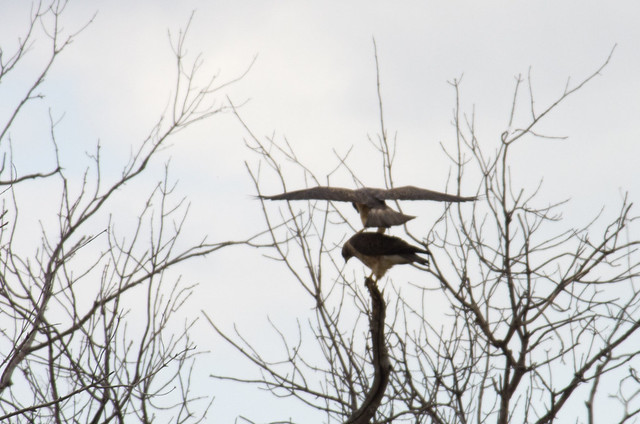 SD 136 Sexy Swainsons 5 by Martin Brummell, on Flickr SD 136 Sexy Swainsons 5 by Martin Brummell, on Flickr
|
|
|
|
Some critters at a campsite in Bronte Creek Provincial Park, Burlington, Ontario, from June. I sat down last night and banged out some quick edits before bed. I have a large backlog of photos from the last half-year, including many cool critters.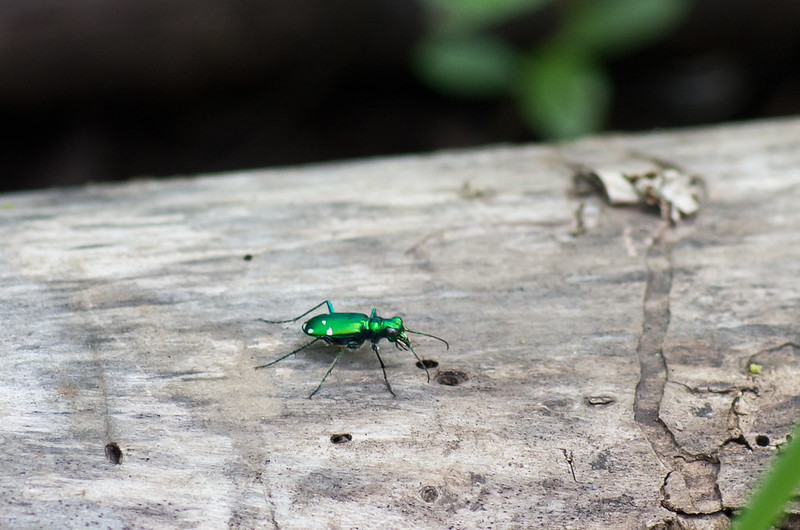 Bronte Creek PP 1 by Martin Brummell, on Flickr Bronte Creek PP 1 by Martin Brummell, on FlickrTiger Beetle 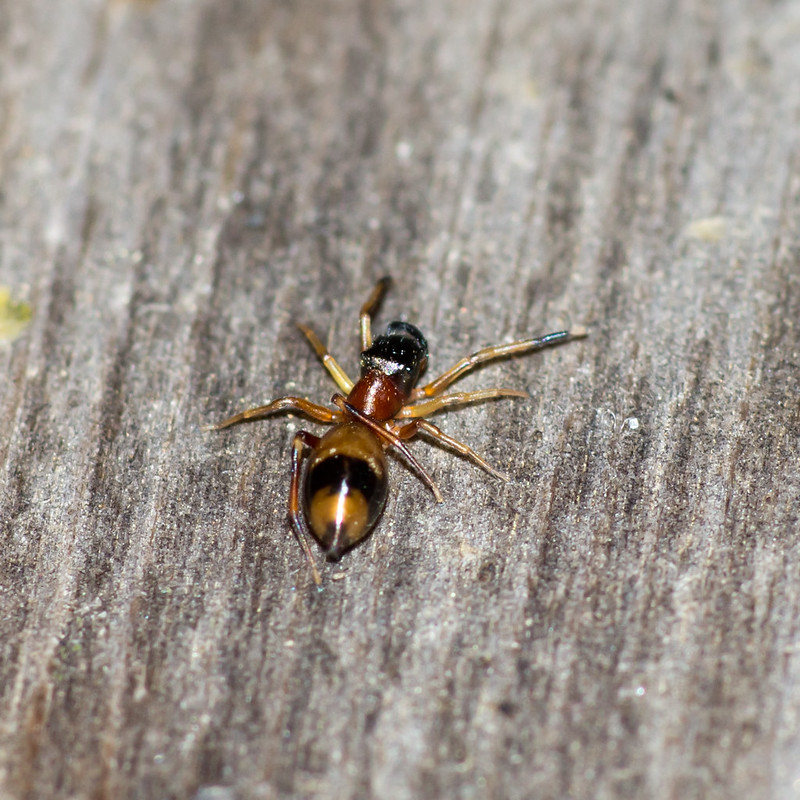 Bronte Creek PP 2 by Martin Brummell, on Flickr Bronte Creek PP 2 by Martin Brummell, on Flickr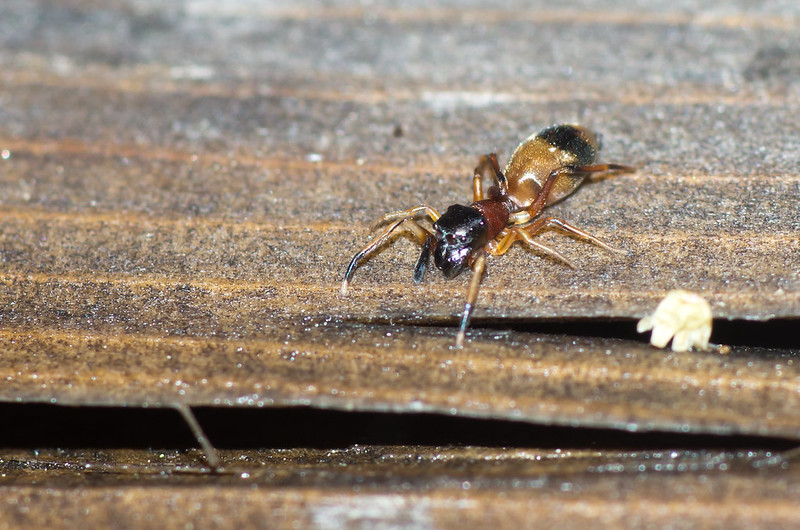 Bronte Creek PP 3 by Martin Brummell, on Flickr Bronte Creek PP 3 by Martin Brummell, on FlickrAnt-mimicing jumping spider. I'd heard of these but I never expected to see one. This guy was just exploring the picnic table at our campsite. 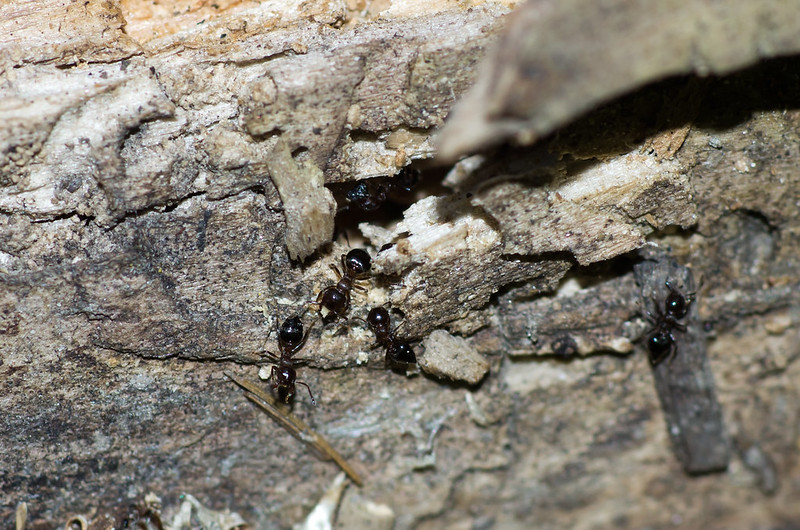 Bronte Creek PP 4 by Martin Brummell, on Flickr Bronte Creek PP 4 by Martin Brummell, on FlickrItty-bitty ants doing tunnel construction/maintenance in their log. 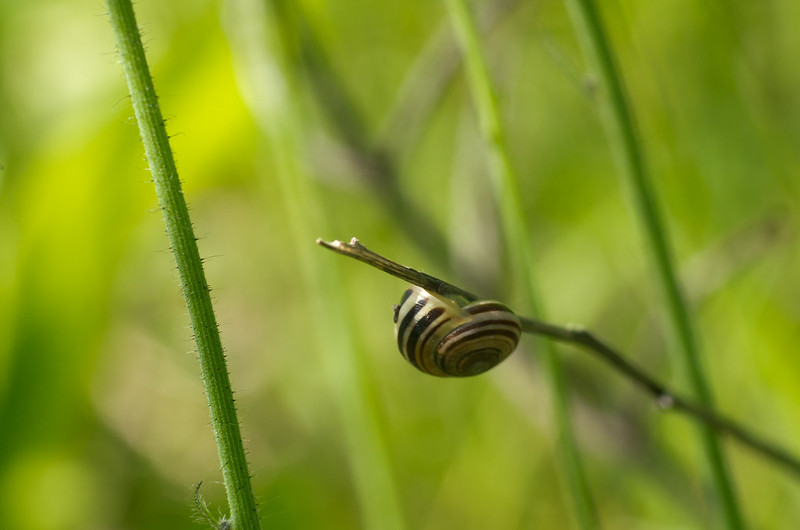 Bronte Creek PP 6 by Martin Brummell, on Flickr Bronte Creek PP 6 by Martin Brummell, on FlickrCepaea nemoralis 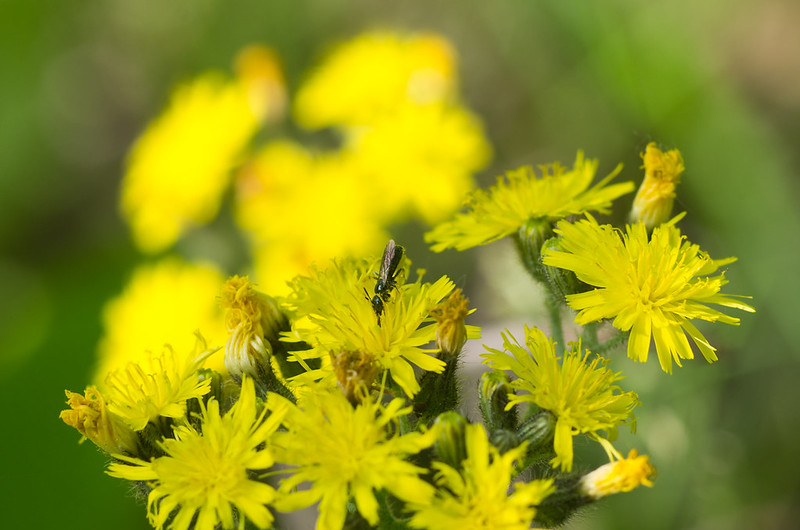 Bronte Creek PP 7 by Martin Brummell, on Flickr Bronte Creek PP 7 by Martin Brummell, on Flickr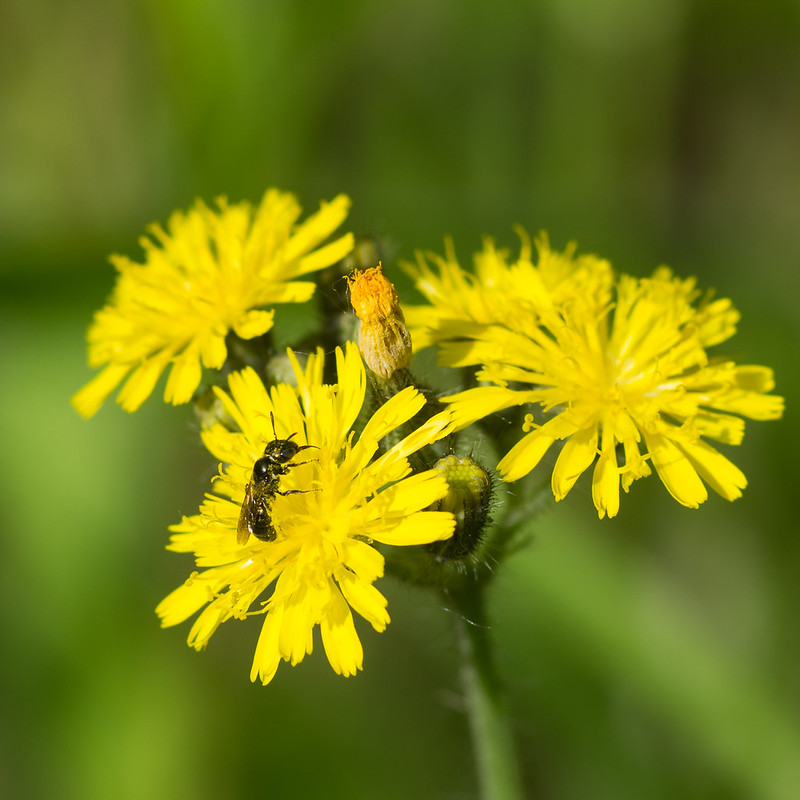 Bronte Creek PP 8 by Martin Brummell, on Flickr Bronte Creek PP 8 by Martin Brummell, on Flickr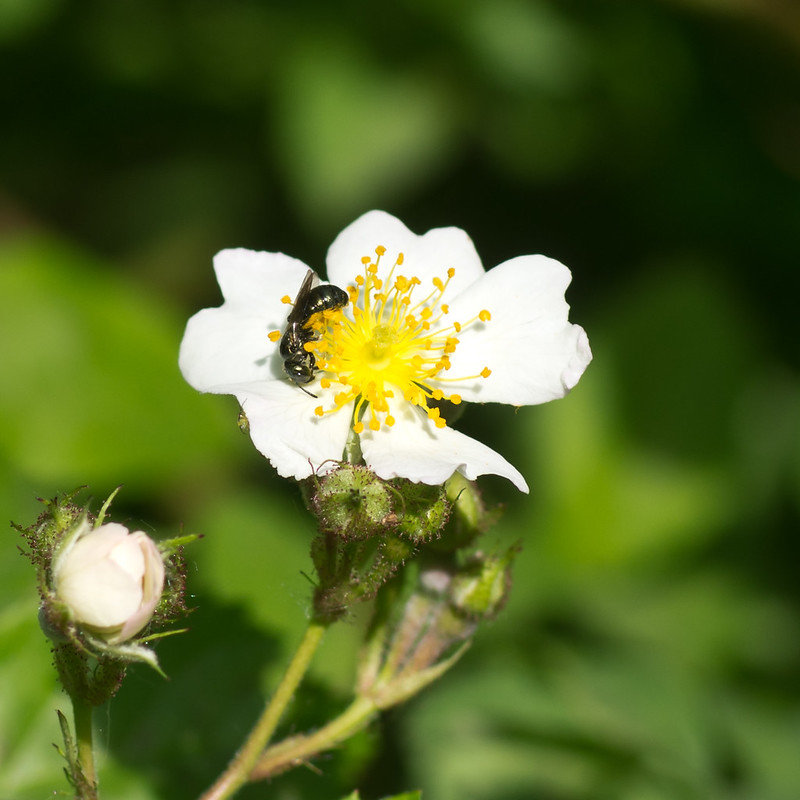 Bronte Creek PP 9 by Martin Brummell, on Flickr Bronte Creek PP 9 by Martin Brummell, on FlickrPollinators 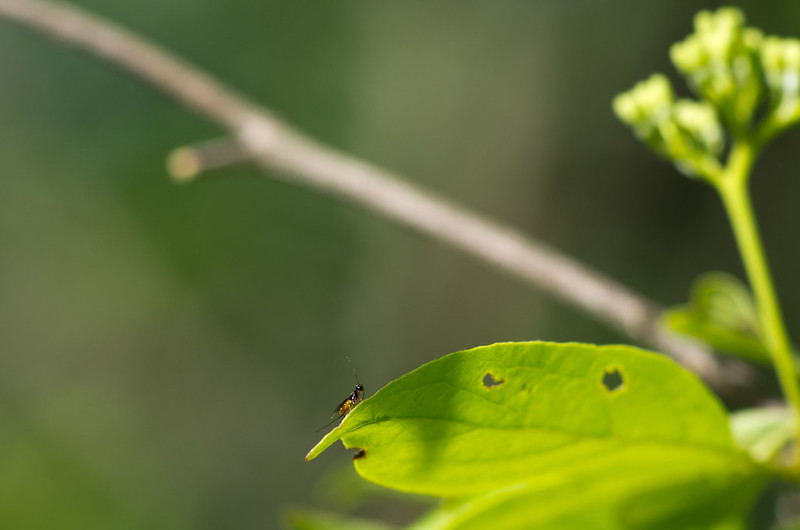 Bronte Creek PP 12 by Martin Brummell, on Flickr Bronte Creek PP 12 by Martin Brummell, on Flickr Bronte Creek PP 13 by Martin Brummell, on Flickr Bronte Creek PP 13 by Martin Brummell, on Flickr Bronte Creek PP 15 by Martin Brummell, on Flickr Bronte Creek PP 15 by Martin Brummell, on Flickr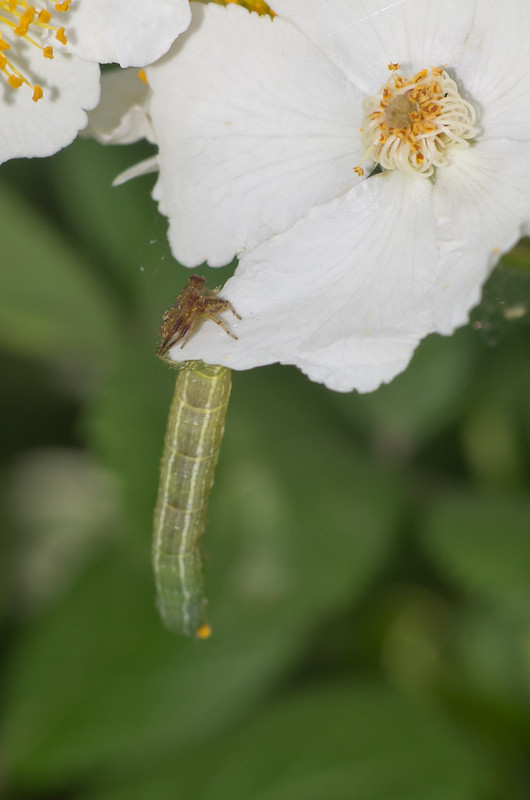 Bronte Creek PP 17 by Martin Brummell, on Flickr Bronte Creek PP 17 by Martin Brummell, on FlickrAnd some miscellaneous critter photos.
|
|
|
|
Mak0rz posted:It's a mud dauber. They FTFY
|
|
|
|
I visited the aquarium in Toronto back in September. Here's a start on the pile of editing I set up for myself. Past-me is a bit of a lazy jerk.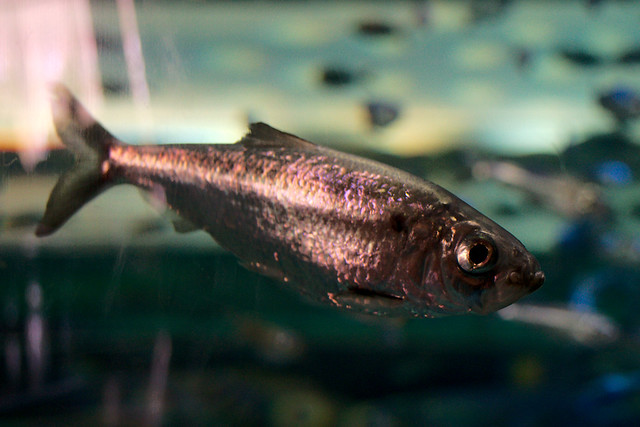 Toronto Aquarium 07 by Martin Brummell, on Flickr Toronto Aquarium 07 by Martin Brummell, on Flickr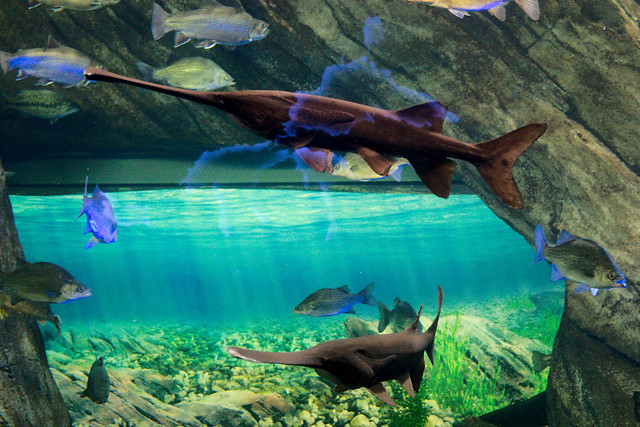 Toronto Aquarium 09 by Martin Brummell, on Flickr Toronto Aquarium 09 by Martin Brummell, on Flickr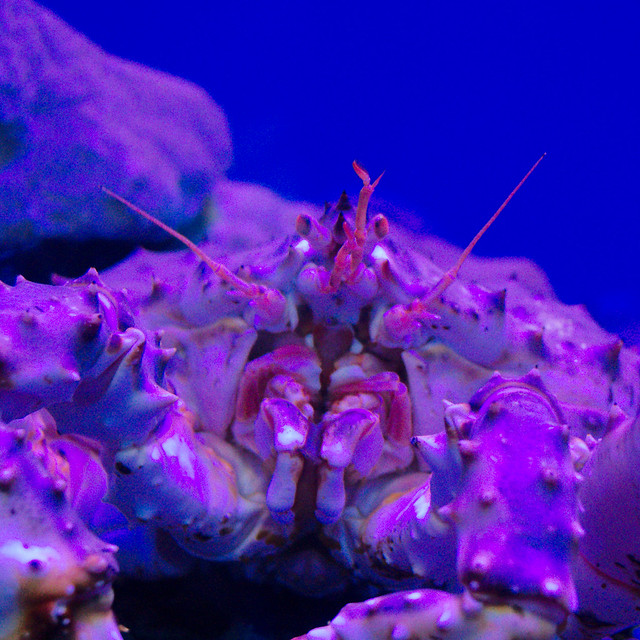 Toronto Aquarium 13 by Martin Brummell, on Flickr Toronto Aquarium 13 by Martin Brummell, on Flickr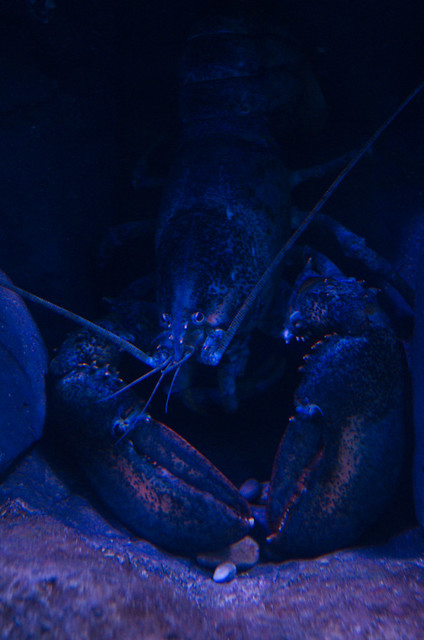 Toronto Aquarium 15 by Martin Brummell, on Flickr Toronto Aquarium 15 by Martin Brummell, on Flickr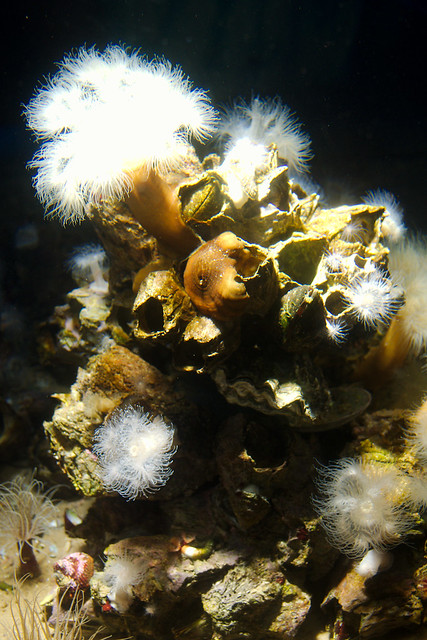 Toronto Aquarium 17 by Martin Brummell, on Flickr Toronto Aquarium 17 by Martin Brummell, on Flickr
|
|
|
|
a hole-y ghost posted:Is there a critterquest, but for plants? I mean, like a thread where people will identify plants
|
|
|
|
This showed up on my twitter this morning, I think it's pretty amazing: https://www.brisbanetimes.com.au/na...125-p4yywi.html Some guy goes for a walk in his local Botanical Garden, and takes some fantastic photos of something that might have never been observed before: a leaf-cutter bee and a wolf spider sharing a burrow. quote:The Queensland Rail employee decided to investigate further and laid down on the ground to watch the hole up close and see what would come out. quote:Dr Raven said it was possible the bee had managed to sweet-talk her way into the burrow. And I'm surprised that the wolf spider even had a burrow to begin with. The bee is using the burrow to raise her offspring, but a female wolf spider carries her eggs and later babies on her body as she roams around; I didn't think wolf spiders ever returned to a particular spot. Even if they're territorial, I didn't think they would keep coming back to one particular spot for any reason.
|
|
|
|
Please don't pick up turtles by their tails. It can injure them. Please DO help them get off roads. https://www.youtube.com/watch?v=Lgd_B6iKPxU
|
|
|
|
PREYING MANTITS posted:I think that's exactly what's going on with the feathers, it's definitely a younger bird given the lack of "wrinkles" and it also had a pretty bad attitude, of the 10 or so around there that one was the one hissing at me quite a bit. Stood out from the group for sure. D I think you're on to something. A few years ago, a man who spends much of his time banding birds told me that turkey vultures (the only species in Saskatchewan) are really chill when they're adults. He climbs up to a nest, finds a vulture, holds it in the usual gentle-but-firm way, and tags it. If there's a juvenile in the nest, it will freak the gently caress out and try to murder his face as soon as he reaches the nest, but the parents don't mind a bit. Coming of Age for a vulture apparently means no longer giving any fucks at all.
|
|
|
|
/\/\/\ There's a gas station on the highway outside of town that supposedly has regular Luna moth visitors clinging to the windows of the convenience store. We've already collected a few other moths from there, the guy behind the counter has been quite friendly and helpful. On Sunday I joined a project on iNaturalist, with the goal of finding 151 species for Canada's 151st birthday. I got to about 100, with some probable duplicates bringing that down a little, but with my fiancee our team score is somewhere near 200. Our home internet is slow, so I only managed to upload and file a handful last night, but iNaturalist's resident experts happily identified a couple of things for me. The first observation of the day, an Eastern Tent Caterpillar Moth on the screen of my front door. Makes sense, we had a major infestation of these guys this year, a month ago you could't walk anywhere outside without stepping on dozens of them, and running into hanging caterpillars from every tall structure (trees, buildings, lampposts...). 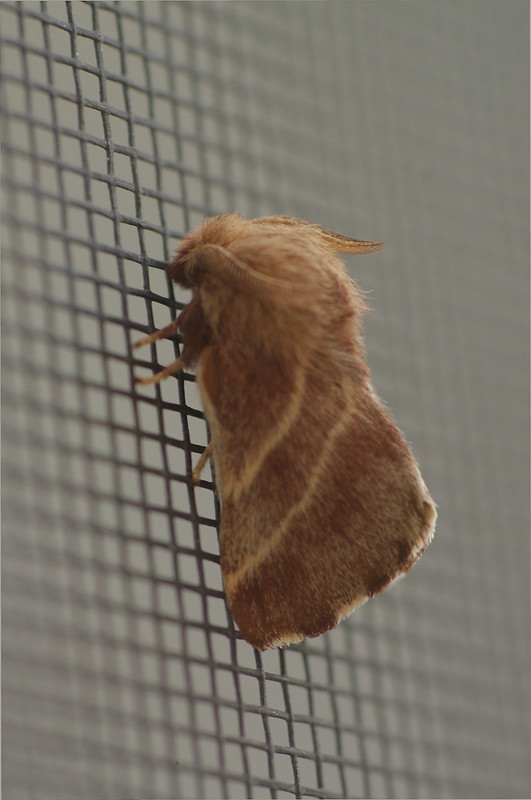 Canada 151 Bioblitz 0004 by Martin Brummell, on Flickr Canada 151 Bioblitz 0004 by Martin Brummell, on FlickrI don't know what this mite might be.  Canada 151 Bioblitz 0005 by Martin Brummell, on Flickr Canada 151 Bioblitz 0005 by Martin Brummell, on FlickrAnd my list includes around half plants, so here's a Smooth Brome as identified by somebody on iNaturalist representing an Ontario invasive species group. 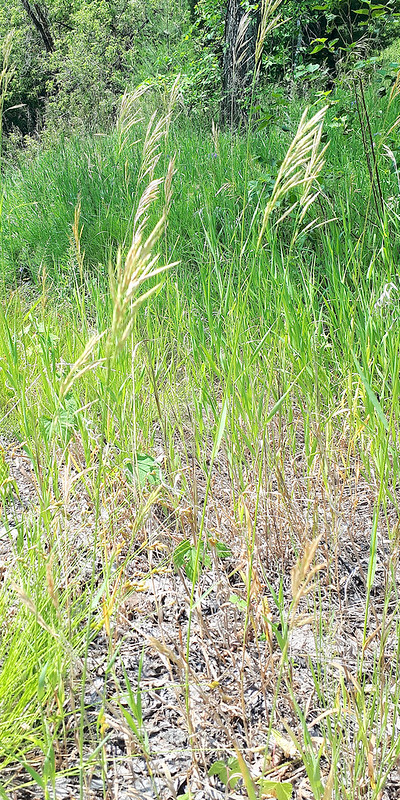 Canada 151 Bioblitz 0009 by Martin Brummell, on Flickr Canada 151 Bioblitz 0009 by Martin Brummell, on Flickr*** iNaturalist is pretty good, so far. I'm going to keep using it - the app works reasonably well on my phone, but the website, as on my computer, is more flexible and user-friendly. I'm still figuring out the link between Flickr and iNaturalist, it seems to work well but I generate duplicate submissions when I select multiple photos for a single observation.
|
|
|
|
A longer macro lens has a correspondingly longer working distance - the distance between the front element and the critter you're trying to shoot. A dragonfly like that Halloween Pennant would fill the frame nicely at a distance of around 3 feet, and be at something like 1:3 magnification. At 1:1 I'm maybe 6 or 8 inches from my subject (and the depth of field is thinner than the proverbial razor). 15mm seems crazy, but you're getting some fantastic shots. I have a Flickr tag, "outoffocustheyflyaway" that leads to a large number of photos of blurry bee butts and tailfeathers, because I tried to get too close.Over There posted:I always see these guys in large groups. Yeah, there were a few dozen of these itty-bitty mites running around (stay still dammit! I'm trying to take a picture!) on the concrete pad in front of my house.
|
|
|
|
a hole-y ghost posted:what lens do you use? I've been thinking to pick up a macro lens for reference shots of small stuff and am planning so far to get a 100mm canon macro with IS so I don't need to get way up close but I'm kinda worried that a longer lens will give me too shallow a depth of field for effective reference. any thoughts? The depth of field is a limiting factor, certainly. I guess the trade-off is DoF vs. working distance. I shoot handheld on critters that can easily get away from me 99% of the time with this lens (the major exception is spiders on webs, but the slightest breeze makes them zip back and forth through my DoF). In my opinion and experience, anything with eyes works the same way - get the eye in focus and the picture is in focus. I've got series of shots of dragonflies and other bigger insects that have other parts of the individual in focus - eye, mouthparts, legs, wings - and the only ones that look "good" are the ones with the eye in focus. Sometimes I get lucky and the plane of focus includes both the eyes and the wings, so you can see the wing veins clearly. Most of the time, my background is a completely blurred out nothingness, which normally I like but Preying Mantits has some great actual-backgrounds in shots on Flickr that I won't be able to come close to replicating with my setup. From further away, the DoF gets thicker, and cropping in post to fine-tune (or completely renovate) composition is not too bad until you start cropping out 3/4 or more of your image. Even then, I don't notice pixelation or ISO noise until I'm cropping really tight, so staying at a reasonable distance (avoid critter fleeing) and having a DoF thick enough to get the whole bug in focus is a reasonable strategy most of the time. If you're taking pictures for identification, then the eyes-rule goes away. Lots of flies, for example, are distinguished by wing venation so a shot with a blurry face but nicely visible wings is golden. And of course you can break that rule for other interesting effects, like a close-up of gnarly mouthparts (find an assassin bug and shoot up its nose) or other parts.
|
|
|
|
I went to a music festival in northern Saskatchewan last month, and they had a garden full of flowers and insects. Ness Creek 2018 The Forest Garden-0007 by Martin Brummell, on Flickr Ness Creek 2018 The Forest Garden-0007 by Martin Brummell, on Flickr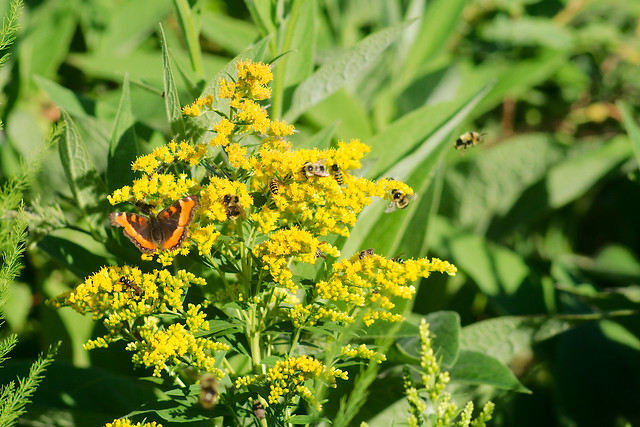 Ness Creek 2018 The Forest Garden-0008 by Martin Brummell, on Flickr Ness Creek 2018 The Forest Garden-0008 by Martin Brummell, on Flickr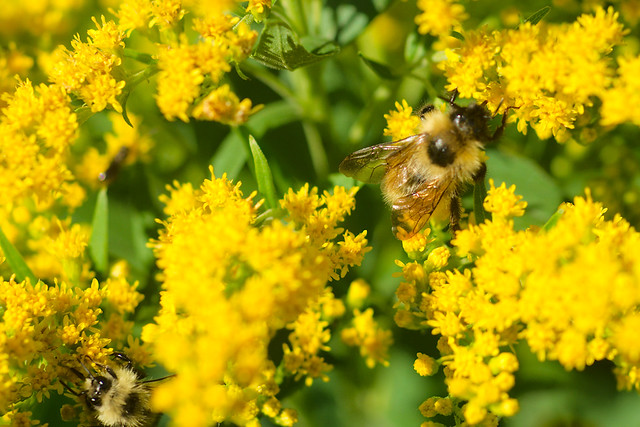 Ness Creek 2018 The Forest Garden-0010 by Martin Brummell, on Flickr Ness Creek 2018 The Forest Garden-0010 by Martin Brummell, on Flickr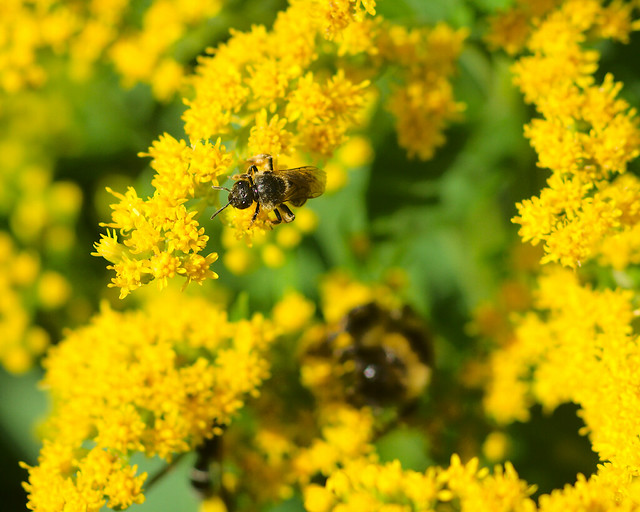 Ness Creek 2018 The Forest Garden-0012 by Martin Brummell, on Flickr Ness Creek 2018 The Forest Garden-0012 by Martin Brummell, on Flickr Ness Creek 2018 The Forest Garden-0013 by Martin Brummell, on Flickr Ness Creek 2018 The Forest Garden-0013 by Martin Brummell, on Flickr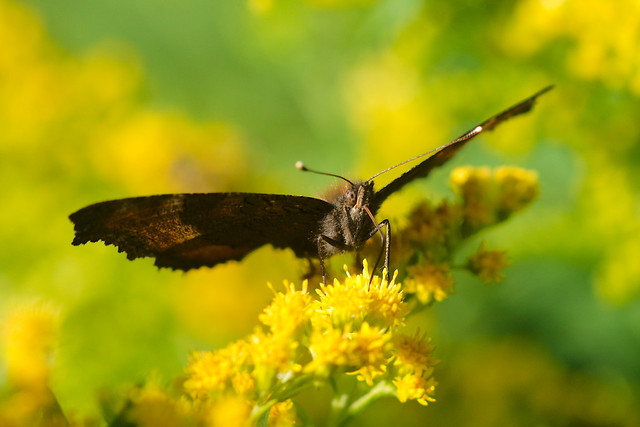 Ness Creek 2018 The Forest Garden-0014 by Martin Brummell, on Flickr Ness Creek 2018 The Forest Garden-0014 by Martin Brummell, on Flickr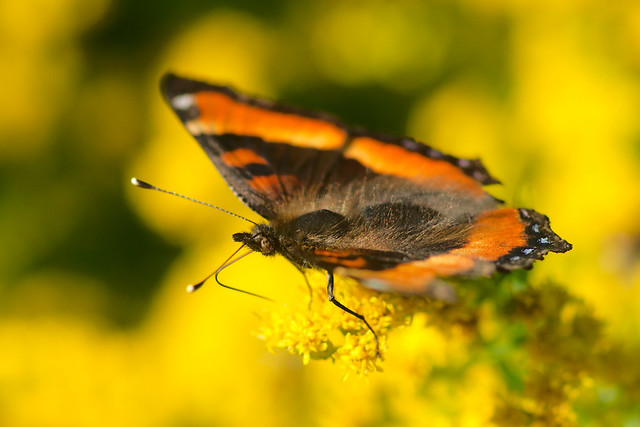 Ness Creek 2018 The Forest Garden-0015 by Martin Brummell, on Flickr Ness Creek 2018 The Forest Garden-0015 by Martin Brummell, on Flickr
|
|
|
|
This little jumper welcomed us to a beautiful campsite on an island in a large lake in northwestern Ontario, in July.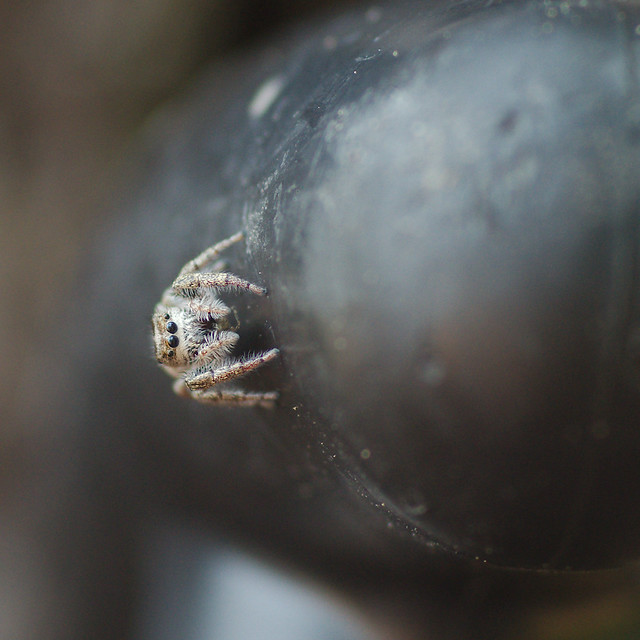 Blueberry-Pike Island-0004 by Martin Brummell, on Flickr Blueberry-Pike Island-0004 by Martin Brummell, on Flickr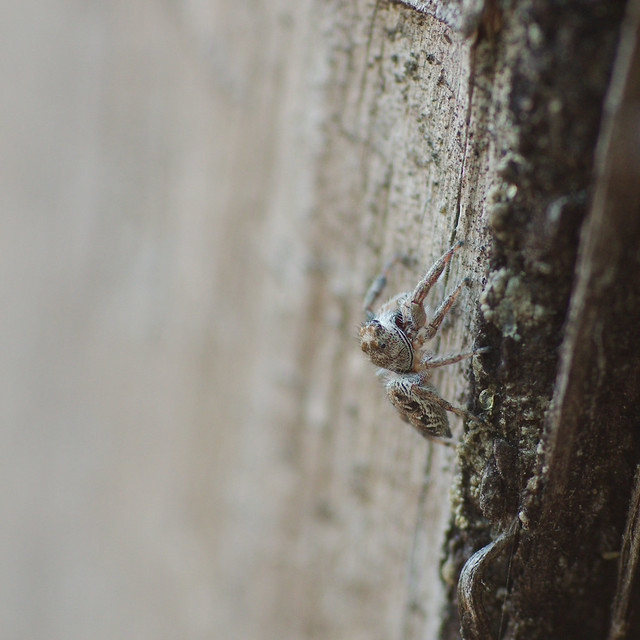 Blueberry-Pike Island-0005 by Martin Brummell, on Flickr Blueberry-Pike Island-0005 by Martin Brummell, on Flickr
|
|
|
|
This pretty lady was hunting for something under my hammock among the pine-needle-litter and lichens on the island we camped on in July. North-western Ontario, White Otter Lake.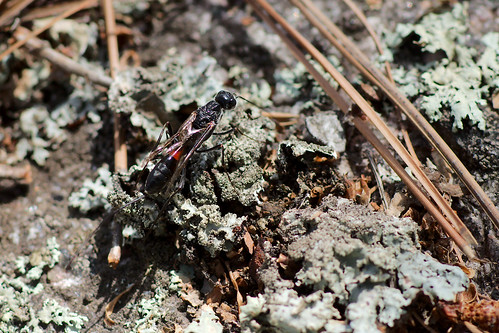 Blueberry-Pike Island Wasp-0001 by Martin Brummell, on Flickr Blueberry-Pike Island Wasp-0001 by Martin Brummell, on Flickr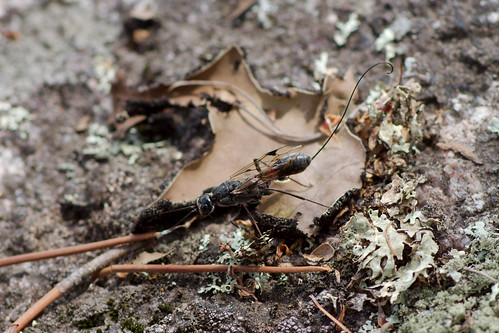 Blueberry-Pike Island Wasp-0002 by Martin Brummell, on Flickr Blueberry-Pike Island Wasp-0002 by Martin Brummell, on Flickr
|
|
|
|
I don't know what species that is or how dangerous it might be, but I'm moving to Australia soon and I am taking the term "Danger Noodle" with me.
|
|
|
|
Nice pics! Your big ol mosquito is no such thing. It's a crane fly, family Tipulidae, and non-biting.
|
|
|
|
Trying to identify a lizard, not having much luck with internet sites that want to tell me about oddball lizards rather than just showing me what's around. 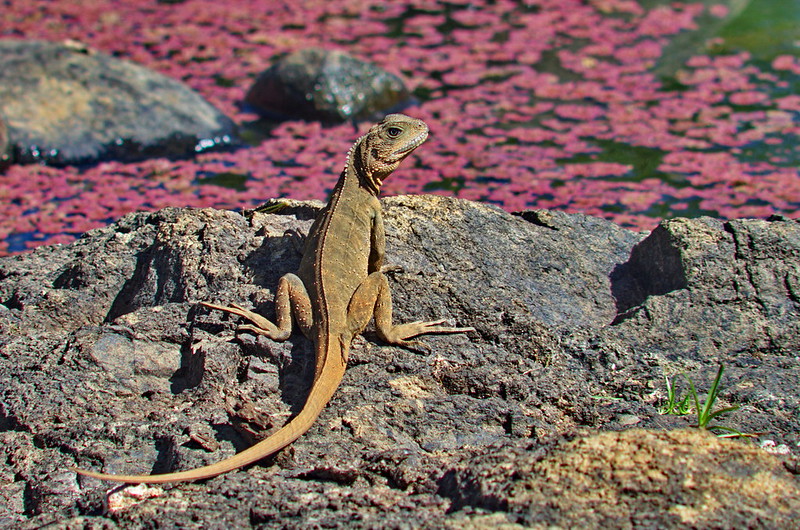 SD 197 Dragon by Martin Brummell, on Flickr SD 197 Dragon by Martin Brummell, on FlickrWe took this picture on Saturday. We're in Armidale, NSW, Australia, and we were driving around about 30 km east of town when we came across this guy sunning on rocks in a nearly-dry creekbed.
|
|
|
|
the yeti posted:Intellagama lesueurii, maybe? They seem to be typically more heavily striped though. spongepuppy posted:Looks a lot like a brown colour morph of Eastern water dragon. Possibly a juvenile? This is the same answer as Twitter came up with. My fiancee, who actually took the picture using my camera, posted to her Twitter with the same question and given that she follows / is followed by a whole bunch of naturalists of various stripes, I'm pretty confident that you both are correct. Thank you!
|
|
|
|
Speaking of honey bees and the critters that love them... Last month I spent a week down at the coast of northern New South Wales (I live in Armidale, up on the tablelands), helping a colleague with some pollination research. I stayed right next to a gorgeous beach and that whole week I got out and about as much as I could.  13 May 009 by Martin Brummell, on Flickr 13 May 009 by Martin Brummell, on FlickrThe main pollinator (probably*) of the blueberry crop at this commercial operation is managed European Honey Bees.  13 May 010 by Martin Brummell, on Flickr 13 May 010 by Martin Brummell, on FlickrA fly hanging out on a leaf. I very often see flies sitting on sunny leaves, and they seem to defend their little territories from other flies. This is a side-project on a side-project on a side-project, so if somebody else wants to launch an actual study and "scoop" me I won't mind. What's up with these flies?  13 May 011 by Martin Brummell, on Flickr 13 May 011 by Martin Brummell, on FlickrOne of the blueberry fields. The netting is to keep out birds that would eat the berries. This netting, unlike some I've seen, does not tend to capture birds - other mesh sizes tend to tangle birds, and some apple orchards I have seen are just surrounded by dead birds. The white thing on a bush on the right is a bag around a branch with a flower we've marked on it, part of the research involves looking at what gets into flowers when insects are excluded.  13 May 012 by Martin Brummell, on Flickr 13 May 012 by Martin Brummell, on FlickrThe bees sometimes bounce off the netting, but they can get through easily enough. This one was resting for bit, she flew off a few minutes after I took this.  14 May 003 by Martin Brummell, on Flickr 14 May 003 by Martin Brummell, on FlickrDog on the beach. I can recommend an excellent Airbnb near Arrawarra Headland if anybody is thinking of visiting that area. Just gorgeous. * Pollination is complex, and simple measures of things like number of visits to a flower by different species is not a good predictor of actual pollination, i.e. production of seeds & fruit. Like many other producers who are growing pollination-dependent crops, Australian blueberry growers often contract the services of commercial bee hive operators, and at this large operation there are clusters of hives set up near or within most of their fields. They also have hives of stingless bees (I need to look up the species, haven't done that yet), but not as many. My colleague did some fairly intensive insect surveys the week before I got down there and said she found like two wild bees (as in, two individuals, not species, though these were two different species in this case). Honestly it was kinda weird how low the diversity of insects within the fields was. The pest management practices of this producer are probably the real explanation, but we haven't explored this yet - that will be a big part of my research project here, but there are commercial considerations and a working relationship between us and the producer - so far, so good, but we need to negotiate some things before I can start measuring what is ending up on the plants. Certainly they're spraying herbicides (almost certainly RoundUp) to control weeds, and they've told us they target particular pest insects (there's a moth species that they worry about) when they detect an outbreak, but they don't (they say) spray routinely.
|
|
|
|
/\/\/\ Nice! I can never get close to turtles, they drop into the water as I'm swinging the camera up. Mak0rz posted:Honey bees aren't going to be very good at pollinating blueberries. Vaccinium flowers require buzz pollination, which honey bees aren't physically capable of doing. All blueberry growers around here use bumble bees instead. Yup, that's what the literature all says. No bumbles in Australia (except Bombus terrestris gone feral in Tasmania) and the local bigger bees that *might* be capable of buzz pollination are not in the blueberry fields. Somebody is pollinating the blueberries, though, and the only other visible candidate are the stingless bees.  14 May 039 by Martin Brummell, on Flickr 14 May 039 by Martin Brummell, on FlickrThis one was on a wattle bush at the edge of a blueberry field. We also found them among the berries, and we captured a few to examine the pollen they're carrying by watching for one to enter a blueberry flower (they're tiny, much smaller than a honey bee), and grabbing her in a small vial when she started to come out. The honey bees are also helping to raise the next generation of spiders!  14 May 046 by Martin Brummell, on Flickr 14 May 046 by Martin Brummell, on FlickrI'm *pretty sure* the wrapped prey is a honey bee. The spider is a St Andrew's Cross spider (Argiope keyserlingi), and her horde of babies had recently hatched. I didn't even see the fly hanging out dangerously close to the spider's mouth until I looked at the pictures on my computer, days later.  14 May 048 by Martin Brummell, on Flickr 14 May 048 by Martin Brummell, on Flickr 14 May 050 by Martin Brummell, on Flickr 14 May 050 by Martin Brummell, on FlickrDoes anybody know how (if?) a spider feeds her young after they hatch?
|
|
|
|
/\/\/\ Nice! More critters from around the blueberry fields. Part of what I was doing there was just acting as an assistant for my colleague, which meant I had time to shoot macro photos while she was keeping her samples organised.  14 May 012 by Martin Brummell, on Flickr 14 May 012 by Martin Brummell, on Flickr 14 May 013 by Martin Brummell, on Flickr 14 May 013 by Martin Brummell, on Flickr 14 May 015 by Martin Brummell, on Flickr 14 May 015 by Martin Brummell, on Flickr 14 May 016 by Martin Brummell, on Flickr 14 May 016 by Martin Brummell, on Flickr 14 May 017 by Martin Brummell, on Flickr 14 May 017 by Martin Brummell, on FlickrThis guy (from the eyes, pretty sure he's male) just sat on my clipboard for about 5 minutes while I was writing down notes about the wildflowers we'd found.  14 May 019 by Martin Brummell, on Flickr 14 May 019 by Martin Brummell, on FlickrThis odd little guy was very slowly chewing along a blueberry leaf. There are moths that play dress-up as caterpillars, aren't there?  14 May 021 by Martin Brummell, on Flickr 14 May 021 by Martin Brummell, on Flickr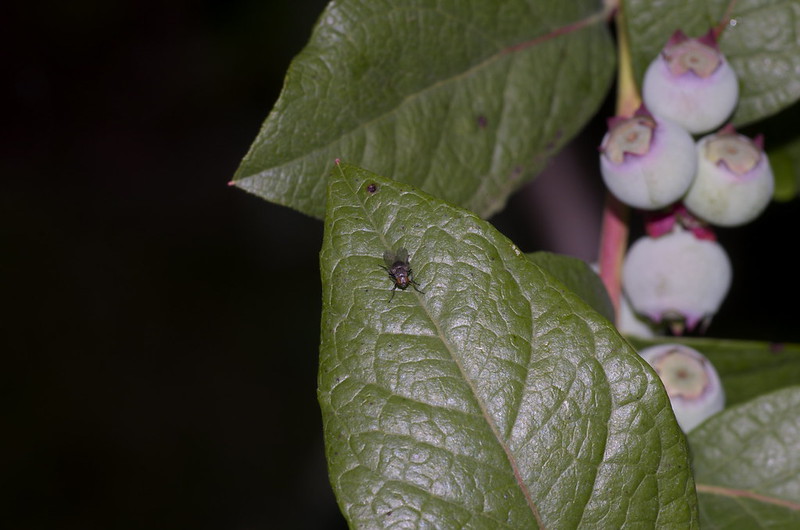 14 May 023 by Martin Brummell, on Flickr 14 May 023 by Martin Brummell, on Flickr 14 May 026 by Martin Brummell, on Flickr 14 May 026 by Martin Brummell, on FlickrBoth honey bees and stingless bees seem to love this grass tree, which is interesting because this plant is pollinated by wind, not by insects. Another colleague recently published a really good review paper about wind-pollinated plants with regular visitors of typically-pollinating insects.  14 May 029 by Martin Brummell, on Flickr 14 May 029 by Martin Brummell, on FlickrThis little spider was headed up to get in on that pollinators-visiting-grass action. 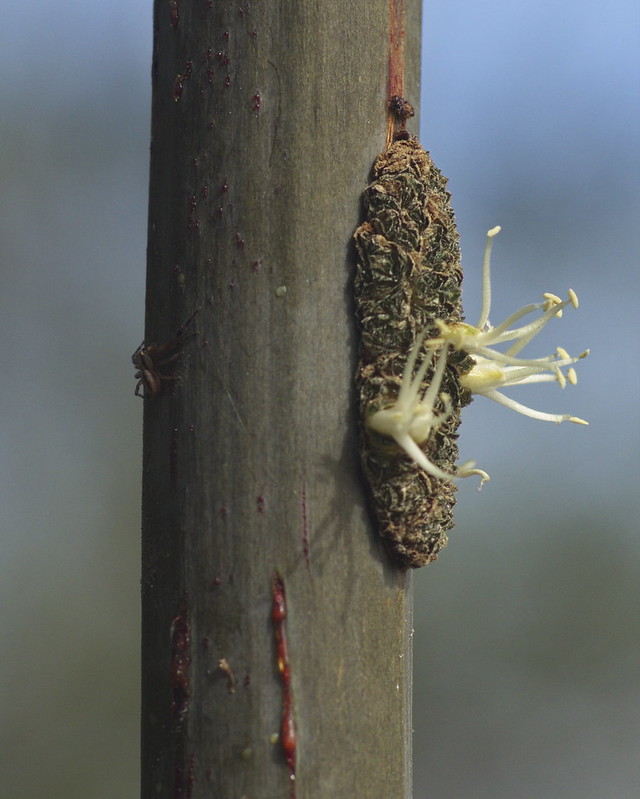 14 May 030 by Martin Brummell, on Flickr 14 May 030 by Martin Brummell, on FlickrThrips  14 May 035 by Martin Brummell, on Flickr 14 May 035 by Martin Brummell, on FlickrA male midge. His feathery antennae were finer than the resolution of my camera, making nailing focus very difficult.  14 May 042 by Martin Brummell, on Flickr 14 May 042 by Martin Brummell, on FlickrAnd for the curious, this is what blueberry flowers look like. The open flowers are about 1cm long. 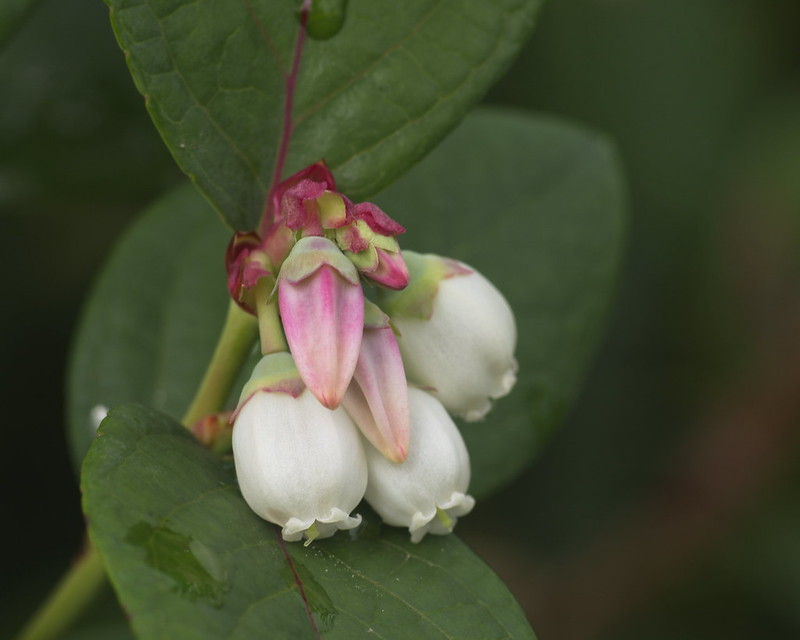 14 May 020 by Martin Brummell, on Flickr 14 May 020 by Martin Brummell, on FlickrSorry for the big photodump
|
|
|
|
More from around the blueberry fields 15 May 008 by Martin Brummell, on Flickr 15 May 008 by Martin Brummell, on Flickr 15 May 009 by Martin Brummell, on Flickr 15 May 009 by Martin Brummell, on Flickr 15 May 010 by Martin Brummell, on Flickr 15 May 010 by Martin Brummell, on Flickr 15 May 012 by Martin Brummell, on Flickr 15 May 012 by Martin Brummell, on Flickr 15 May 014 by Martin Brummell, on Flickr 15 May 014 by Martin Brummell, on Flickr 15 May 017 by Martin Brummell, on Flickr 15 May 017 by Martin Brummell, on Flickr 15 May 018 by Martin Brummell, on Flickr 15 May 018 by Martin Brummell, on Flickr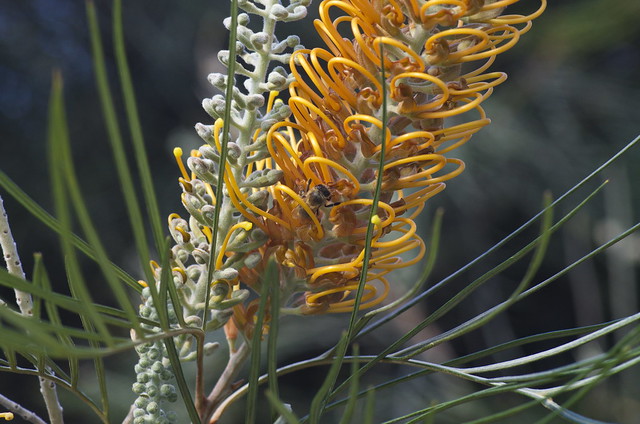 15 May 019 by Martin Brummell, on Flickr 15 May 019 by Martin Brummell, on Flickr
|
|
|
|
"Halucinogenic Fungus Researchers" sounds like a decent band name. Not great, but a good start.
|
|
|
|

|
| # ¿ May 10, 2024 02:52 |
|
Crossposting here and the Mushroom Megathread From a walk in Killbear Provincial Park, Ontario, last October (i.e. more than a year ago). Mostly an exercise in A) taking pictures and then B) ignoring said pictures on my harddrive for a long time.  SD 194 Killbear PP 03 by Martin Brummell, on Flickr SD 194 Killbear PP 03 by Martin Brummell, on Flickr SD 194 Killbear PP 04 by Martin Brummell, on Flickr SD 194 Killbear PP 04 by Martin Brummell, on Flickr SD 194 Killbear PP 07 by Martin Brummell, on Flickr SD 194 Killbear PP 07 by Martin Brummell, on Flickrplus a tiny fly.  SD 194 Killbear PP 09 by Martin Brummell, on Flickr SD 194 Killbear PP 09 by Martin Brummell, on Flickr SD 194 Killbear PP 10 by Martin Brummell, on Flickr SD 194 Killbear PP 10 by Martin Brummell, on Flickrand a bird that some good Goons suggest is a Swainson's Thrush. Probably a juvenile loading up on autumn seeds/berries/bugs for the trip south.  SD 194 Killbear PP 13 by Martin Brummell, on Flickr SD 194 Killbear PP 13 by Martin Brummell, on Flickr
|
|
|


